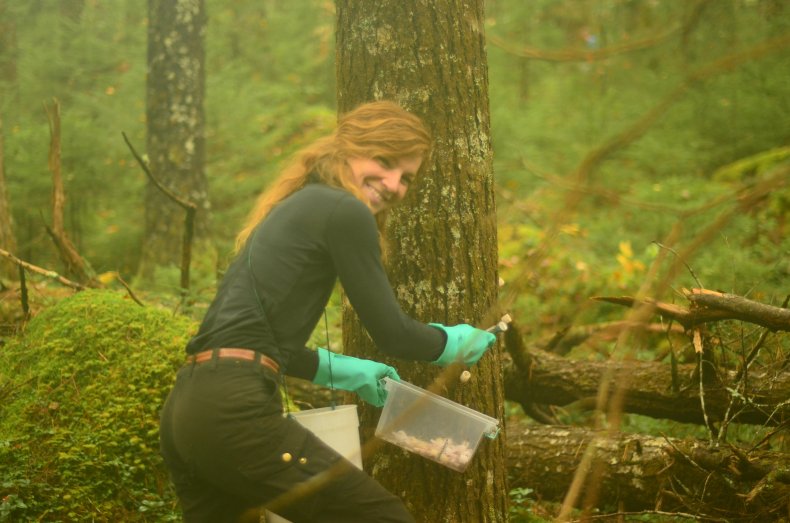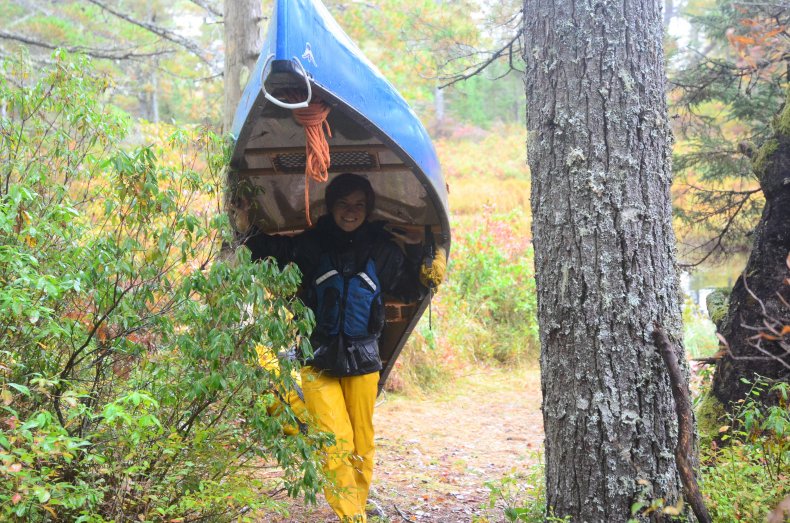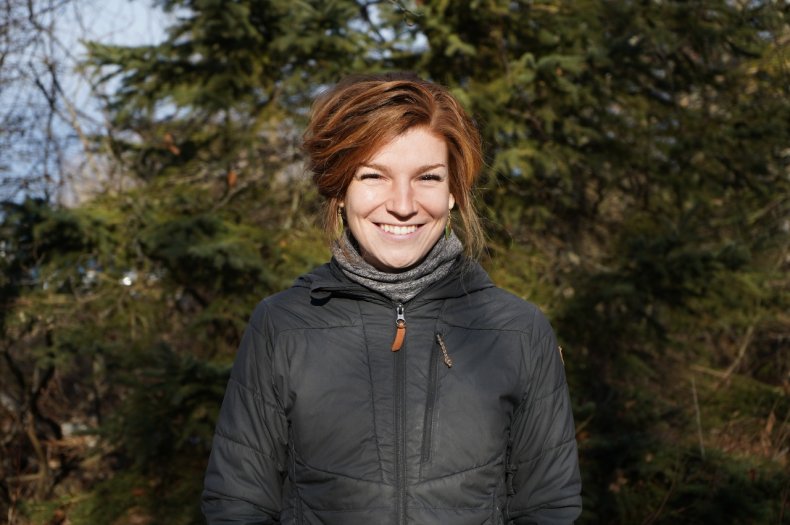As part of a Serie Highlighting the work of young people to address the climate crisis, writer Patricia Lane interviews Dani Miller, who through her work for Community Forests International is helping save trees.
Dani miller
As coordinator of the Common Ground project for Community Forests International, Dani Miller uses knowledge sharing and storytelling to support 80,000 landowner families in the Wabanaki Forest, more commonly known as the Acadia Forest, in climate-smart forest management to protect their land for generations to come, while increasing climate resilience.

Tell us about your project.
Short-cycle logging has been the rule for much longer in the Maritimes than anywhere else in Canada and has left our forests and ecosystems severely degraded. The industry’s insistence on using low-grade, fast-growing timber to extract maximum benefit means that water quality is threatened, flooding and soil loss, and reduced resilience to change Climate conditions are common, and we lack the biodiversity necessary to provide our communities with the well-known human benefits of healthy forests.
But just as there are still some old trees that continue to plant the understory, there are also holders of human knowledge, including many indigenous peoples who understand how to manage forests for health and longevity. My goal is to expand his teachings to enable the region’s 80,000 landowners to sustainably manage their forests.
For example, 40 to 60 years after a clear felling, a landowner will typically harvest fast-growing, easy-milling white fir, birch, and balsam fir. We offer a set of tools to inventory your understory with a view to regenerating the health of your forests based on eco-friendly forestry practices proven over decades by scientists, forestry professionals, and landowners. Then they could selectively cut down to open up the canopy space, allowing native trees like red and sugar maples, yellow birch, and white pine to flourish. This, in turn, allows soil microorganisms, various herbaceous growths, and forest fungi to flourish and regenerate part of the forest’s biodiversity. This way of managing forests increases populations of nesting and migratory birds and wildlife, absorbs carbon and protects against floods.
A strong and healthy forest contains a lot of water. We calculated that the 353-acre forest near Cambridge-Narrows had the equivalent of 10 Olympic-size swimming pools during a severe storm. If that land were cut down, releasing that water could contribute to costly and traumatic flooding downstream during spring rains and storm events.
Canada must do much more to conserve forests if we are to achieve our climate goals. Forests are our best carbon capture opportunity and, unlike other high-tech solutions, they are already proven and working. Sustainable forest management is economically viable if we value its carbon reduction capacity. We have a carbon offset program, which is enthusiastically supported by companies in the Maritime Islands who want to move towards zero carbon by paying people to leave old indigenous trees standing.
“Find your inspiration and spend a lot of time there. For me, it’s walking in old-growth forests where I remember why I love what I do,” says Dani Miller of Community Forests International. #Nature

What makes work difficult?
Today, it is a great challenge to make a living from sustainable logging. Since fir and fir are the dominant species used in construction and pulp, factories are established for these trees. Forestry equipment is designed for clear felling. Educational opportunities on alternative and more sustainable practices are very limited.
But the Nova Scotia government recently commissioned a comprehensive review of forest management, which emphasized climate justice, biodiversity and resilience. It is easier to implement those recommendations with the support of many of the 80,000 small landowners in this region, most of whom want to log sustainably but need the system around them to facilitate this change.
How did you come to do this job?
My father was a forester and he took my brother and me to mature forests whenever he could. Just seeing their awe and wonder left me with a lifetime interest. While we had to pass many forest plantations and logging to get to these forests, it reminded me that it doesn’t have to be this way.
I planned to work in the government after my studies so that I could help change politics, but quickly realized that the pace at which it moves is too slow for the climate emergency. That is why I have decided to work in non-governmental organizations for now. I am inspired by the work of organizations such as the Ecological Action Center in Halifax. They have shown that it is possible to make a difference.

What do you care about?
Ninety-five percent of our ancient forests are missing. We will never get them back. We have a long way to go to conserve the last remaining trees, and the road back to resilience is slow. I’m worried we don’t have time. But then I think of the thousands of people like me who are doing our part and that gives me hope.
What would you say to other young people?
It’s easy to feel stuck and desperate. The mainstream media surround us with negative stories. Find your inspiration and spend a lot of time there. For me, it is walking in primary forests where I remember why I love what I do.
What would you like to say to older people?
Tell us about your stories of changes you have seen. As a young man, I see my surroundings and I think it has always been that way. Remind me that this is not so. If you tell a story of positive change, it will inspire me. Telling a story of change that has been for the worse will remind me that things have not always been this way and that change is possible.
Reference-www.nationalobserver.com